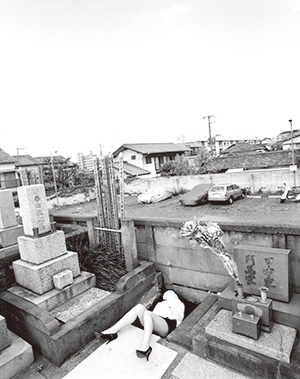 Welcome to the world of Nobuyoshi Araki, Japan’s infamous bad boy of photography.
Welcome to the world of Nobuyoshi Araki, Japan’s infamous bad boy of photography.
When one meets renowned artists for the first time, one often notices a disparity in expectation and reality, where the individual they are meeting is in actual fact nothing like the person they imagined beforehand.
In the case of Araki, however, the character of the artist is unanimously in sync with his works. The 67-year-old artist has an almost irrepressible frenetic intensity about him, and overflows with a rather likeable, vivacious charm, laced with a typically downtown sense of humor that puts one at ease, even though he is known for producing controversial and explicit works.
As author of more than 350 books and photo anthologies, Araki is arguably without equal in terms of creative output. He shoots in a haphazard diary-esque style, usually of subject matter within his immediate surrounds. He invariably carries a camera with him wherever he goes.
“Ultimately, my photo life is my life,” Araki says at an exhibition of his recent work at La Camera in Shimokitazawa. “Photography is my partner, the signs on the roadノ we are on the same road. This is how much I like photos.”
Most people either love or despise Araki’s photography, and yet ミ like all good art ミ at the very least it provokes a reaction. His images have adorned the walls of the world’s most prestigious galleries and, at the same time, been condemned by feminist groups for portraying women in an oppressive manner. Indeed, given the subject matter of much of his artwork, it’s perhaps not surprising that Araki is one of the most celebrated and castigated artists in Japanese history.
Whether one likes Araki’s works or not, his photos capture a slice of Tokyo that is out of reach of most other photographers. Japan’s gargantuan capital can appear impersonal at the best of times and yet Araki is able to show it in a different light, using seemingly off-the-cuff methods to conjure up an intimacy that is more commonly associated with a tainted love affair. Although superficially voyeuristic in appearance, Araki’s photos each express distinct elements of realism, whether or not the subject matter is human, animal, floral, natural or industrial in nature. Even his landscape artworks possess decidedly human qualities, which is one thing that attracts him to those places in the first place.
“I like messiness, the gray areas where the new and the old collide,” he says, when asked to name his favorite locations in Tokyo. “Take Shinjuku, for example. Shinjuku boasts high-rises, and also Golden Gai and Kabukicho, areas that are renowned for being sleazy. I like places where expansion is met by chunks of resistance.”
The pleasure in looking that Araki offers is scopophilic, but also narcissistic. His audience is always aware that, ultimately, Araki is the one who is looking. He is the narrative agent ミ the figure in the landscape ミ and the fact that he also appears to be completely in control of his surroundings allows his audience to feel an affinity with his work. This self-awareness of autonomy and independence has gone a long way towards creating the myth and cult of Araki, whose own personality is just as much a product of hearsay as his works.
Looking at his works, it’s rather difficult to see exactly where the facts end and the fiction begins. His images feature an endless number of young women in love hotels, apparently post- or pre-coitus, many in bondage and captured in the midst of explicit scenes that have been the subject of much controversy.
Araki, however, warns us not to take everything at face value. “When I shoot something, it’s a collaboration between my subject and myself,” he says. “But when I then produce something, it is a collaboration between my audience and myself. The audience can believe what they like. I don’t tell people what they should be seeing. How someone appreciates and understands the photo is up to them. I can’t even promise that what is being shot is real. Photography has a certain vagueness attached to it.
“Say, for example, I photograph a girl. You can’t say whether I’ve fallen in love with the girl (because) you simply don’t know. It’s OK if you view it mistakenly, and it’s also interesting when the viewer feels or sees something that I didn’t even realize existed. I always assume I’ve captured everything about a certain person (in my photos), but maybe I didn’t even grasp everything about the girl in the first place? Maybe the camera picked up a certain truth or wickedness about the girl that I didn’t realize beforehand? This is really interesting because when the photo is developed, I become another person again ミ I become the viewer.”
Araki’s shooting style is impulsive and far from orchestrated. Poet Takeda Shuntaro even once told Araki that he took too many photos to think. Araki admits he considers photography in the same vein as breathing or eating, perhaps even a natural instinct spurred on by his love of meeting people and “love affairs with young women.”
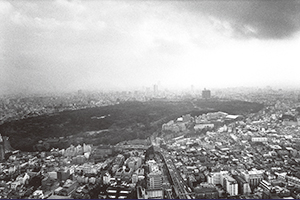 When he was a younger man, Araki once wrote that a good photographer should never show restraint, saying: “A photographer that holds back can’t take a good photograph.”
When he was a younger man, Araki once wrote that a good photographer should never show restraint, saying: “A photographer that holds back can’t take a good photograph.”
These days, however, he has taken a step back from that remark ミ quite literally.
“It’s still better to go for it,” he says, “but say, for example, you are approaching a step. It’s better to approach that step at half a step back (than plough straight through). That’s not holding back ミ it’s respect.
“There are many photographers who just go for it and try to force what their subject doesn’t want to do. But that’s no good. Basically, a good photo is one where the subject featured in the image is happy after the photo is produced.”
This seems like a rather unexpected admission from a character that has been described in some quarters as a pornographic “monster.” Or maybe he has simply chilled out of late? He doesn’t seem to think much has changed in the way he approaches photography over the years, although he admits he has perhaps lost a little of the violent edge that caused such controversy earlier in his career. “My works are gradually losing the violence or roughness they once had,” he says. “My images are becoming kinderノ I don’t know if kindness is the right way to put it. My feelings of empathy are deeper.”
Remember, this is still the very same photographer who has had columns withdrawn from magazines such as Photo and Playboy, and who has been charged of times with discorderly conduct and/or breaking the countoy’s obscenity law.Perhaps he simply does’t feel the need to rebel any more?”I used to do those kinds of things all the time, so I was always getting arrested,” he says. “Lately, however, I’m saying maybe it’s better just to wear clothes! It’s a bit pointless for me to make a statement now. For example, it was once the case that you couldn’t show private parts in a nude shot in Japan. But I’ve already done the things I was told I couldn’t do, so I don’t feel the need to do it now. I have a bit more leeway.”
Araki is considered an icon in Japan, having gone from an independent artist who was always pushing boundaries to one that is now respected for his artworks. He is instantly recognized everywhere he goes and is showered with adoration. But this is not without its drawbacks and, as Araki himself has discovered in recent times, fame comes with a fairly hefty price tag.
“It’s not uncomfortable, but it’s a bit annoying,” he says. “I can’t ride the train any more (because) they sit next to me and ask for a two shot. And because they all have mobile phones now, it’s become even easier. They also seem to like shaking hands, and so people approach me for that. I can’t even walk down the street without being stopped.
“I want to be able to take photos as an invisible person, but I can’t do this any more as my audience and I are already moving in another direction. So what do I do? I must change my method and work with this new direction. But this change in dynamic also offers new possibilities.
“They wait for me, like paparazzi, so I can’t even do exercises on my own balcony like I used to. They often recognize my neighborhood from my photo books, saying, ヤIt’s there! It’s there!’ I hire a private car to pick me up at my doorstep and take me directly to my destination. I’ve been doing this for five or 10 years already. I don’t get any exercise and I don’t walk at all. If I add it all up, I probably walk no more than 50 steps each day (laughs). I am beginning to think I should walk moreノ”
And yet, fame (and fortune) didn’t happen overnight for Araki. Born in Taito Ward in 1940 to a family of geta (clog) makers, he grew up well acquainted with the ways of the Yoshiwara. After studying photography at Chiba University, he worked at the monolithic advertising firm Dentsu, where, aside from shooting commercial works, began working on his personal collection, the subjects of which included his female co-workers in various states of undress.
In 1970, he started to produce photo books from photocopied pictures, and began exhibiting his erotic works. His initial productions were far from polished. “The early works were experimental,” he says. “To experiment is a form of violence.”
Soon after, Araki married Yoko, whom he originally met at Dentsu. She quickly became the focus of his obsession and his honeymoon anthology, Sentimental Journey, is one of his most critically acclaimed pieces of works.
Although she passed away in 1990, Yoko remains Araki’s ultimate muse, and the candle still burns brightly in his heart.
“I can’t forget her, my important Yoko,” he says. “If I had to choose one model to remain, it would have to be her. I still feel her presence in all aspects of my life. For example, when I choose photographs that will feature in a new book or exhibition, I should choose recent images, but I always inexplicably want to throw one in of her.”
“(The soon-to-be-released) Love’s Flower, for example, features 1,000 photos in succession but I’m thinking of printing a copy of a lithograph I did one year after her death on the cover. Her spirit lingers eternallyノ well that is what photography is I guess. If there is something important and I can’t get over it, I guess that is what some might call sentimentalism.”
In 1972, Araki quit Dentsu and started to work as a freelance photographer, publishing books, holding countless exhibitions and shooting for a number of editorial clients. Araki held his first slideshow Arakinema, which still continues, that same year and in 1988 established his company, AaT Room.
He has earned a somewhat cult status overseas, being appreciated as both a notorious rebel photographer as well as a visionary that is representative of contemporary art in Japan. These accolades were earned on the back of books released by prominent publishers such as Taschen, collaborations with artists such as Nan Goldin and exhibitions in various elite galleries and art centers such as the Fondation Cartier pour l’art contemporain in Paris and the recent show at London’s Barbican, which took up the entire gallery and witnessed the release of his brilliant book Self・Life・Death.
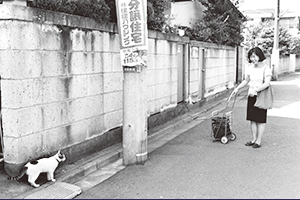 NewYork director Travis Klose made a documentary of Araki called Arakimentari, which follows Araki around on various social outings and jobs in the summer of 2004. Photographer Moriyama Daido, director Takeshi “Beat” Kitano and Icelandic singer Bjork are just some of the stars that made special guest appearances in the film. Bjork fawns over Araki’s insatiable energy and even Takeshi at times appears a little jealous of all the attention that was afforded the aging photographer on his jaunts around Tokyo.
NewYork director Travis Klose made a documentary of Araki called Arakimentari, which follows Araki around on various social outings and jobs in the summer of 2004. Photographer Moriyama Daido, director Takeshi “Beat” Kitano and Icelandic singer Bjork are just some of the stars that made special guest appearances in the film. Bjork fawns over Araki’s insatiable energy and even Takeshi at times appears a little jealous of all the attention that was afforded the aging photographer on his jaunts around Tokyo.
“Araki seems to really enjoy his job,” Takeshi says on camera, “Well, much more than I enjoy mine. I think that that is enviable.”
As far as Araki is concerned, however, his love affair with his camera is eternal.
“I don’t know what’s going to happen in the future but, whatever happens, I’ll just keep shooting,” he says. “I think I can say with utter certainty I will keep taking photos for as long as the world, this time in history and the genius of mankind provides me with subjects.”
When asked what subject matters he is interested in these days, he notes that businessmen are a topic of curiosity for him. “They are restricted in many ways, bound by time, bound by life,” he says “They aren’t like us NEETs. Well, in reality, neither of us has freedom. We are somewhat the same in that respect. Released from the imprisonment of the building, seven, eight of them, lining up at the lightsノ that really excites meノ They probably don’t like it, but I don’t know, there is something there. Before it was the OLs, now it’s the guys. I’m just watching from the side, it’s objectifying, but I’m observing from the car.”
So what can we expect next from the indefatigable Araki?
“I say this often, but that’s for you to decide tonight,” he says with a broad smile. It’s a well used line,it seems,and a bit too pcripted to have much impact,but even in the boundless passion of a man whose creative genius with the camera has made him nothing short of a legend.
Story by Manami Okazaki
From J SELECT Magazine, June 2007

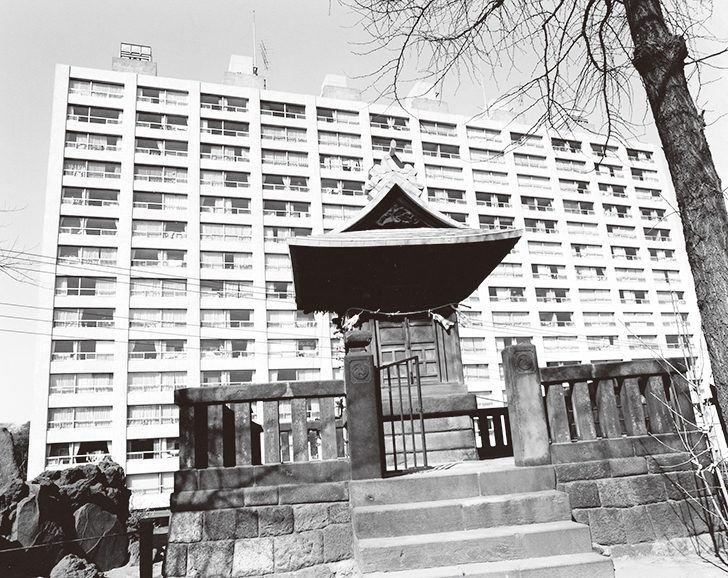



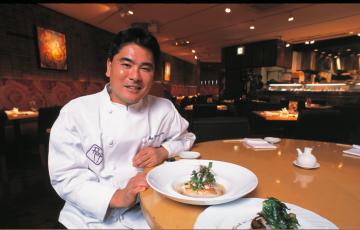
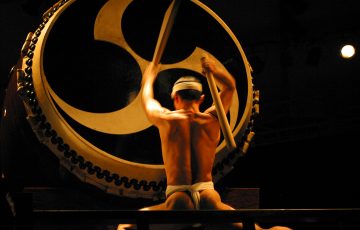
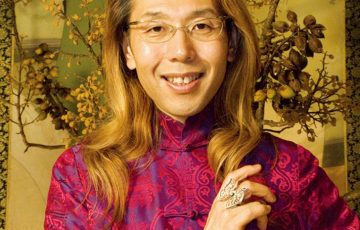

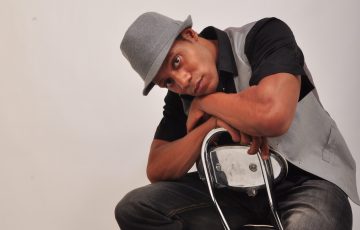

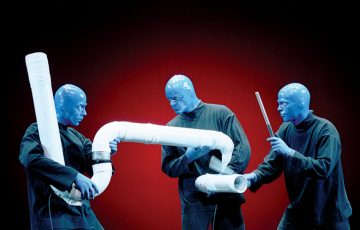



Recent Comments